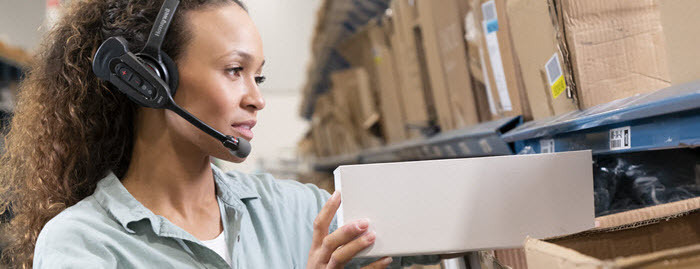6 trends that will impact the profitability of your logistics business
09 Nov 2023
5 min read
The next decade promises to be an exciting but challenging time for logistics. You face challenges and opportunities that will impact your company’s profitability over the next decade. In this article, we present the top six trends identified by logistics CEOs as critical. And the investments they plan to make in response.
1. Changing customer demand and preferences
CEOs understand that today’s customer is more empowered than ever before. The modern consumer is not only critical and well-informed, but also demanding when it comes to quality of service and speed of delivery. It is critical that you respond to changing customer demands and preferences. Not only to maintain customer satisfaction, but also to determine your profitability.
Good (industry) software can help you. Think digital front-end portals and visibility data with real-time tracking, proactive communications, and self-service options that improve customer service and satisfaction. Companies that have embraced these capabilities have seen significant improvements in customer loyalty and competitive advantage.
2. Regulatory changes
Regulations are constantly evolving and can have a significant impact on business operations. Logistics service providers must stay on top of new regulations and adapt to ensure compliance and avoid fines.
3. Lack of (qualified) staff
Logistics is facing a shortage of (qualified) personnel. Attracting, training, and retaining qualified personnel is becoming increasingly important to maintaining a competitive advantage. There are many things you can do to retain qualified employees, but here are four examples:
3.1. Provide opportunities for career development and growth
Employees want to know they can grow and develop in their jobs. Provide training, education, and career development opportunities.
Boltrics Academy: Strengthen your team through continuous learning
we would like to introduce you to the Boltrics Academy – a comprehensive learning platform designed to enhance the knowledge of your employees. Read more >>
3.2. Create a positive work environment
A positive and supportive work environment can increase employee satisfaction. Provide open communication, recognition of accomplishments, and a good work-life balance. Take the time to listen to employees’ needs and concerns, and try to accommodate them as much as possible.
3.3. Invest in team building
Fostering a positive team culture and organizing team-building activities can increase employee engagement.
3.4. Encourage new ideas and initiatives
Employees love challenges and the opportunity to contribute to the company’s growth and innovation.
4. Technological disruptors
The rise of advanced technologies such as AI, blockchain, and the metaverse will drastically change the way businesses operate. You need to invest in technological innovation to stay relevant and increase efficiency. Think about automating processes and systems. And the use of technologies such as cloud computing and AI. These investments increase efficiency, reduce costs, and help you respond quickly to changing market conditions.
From warehouse robots to ChatGPT: the future is closer than you think
Automation, robotics and artificial intelligence are major trends in logistics. But how do they pay off in practice? Read more >>
5. Supply chain disruptions
In recent years, supply chains around the world have shown significant vulnerability. This has been the result of a series of unforeseen events ranging from the COVID-19 pandemic to natural disasters and wars. These events have caused serious disruptions in the supply chains of countless companies. With significant impact on profitability. Managing resilient supply chains is critical to protecting profitability.
CEOs often decide to develop a risk profile and a contingency plan. In many cases, the contingency plan is for logistics providers to enter new markets if there is a chance that they will be affected. This means the company has more suppliers. Having more suppliers reduces dependency and spreads risk. But having more customers, suppliers, and products increases the importance of digitization and automation.
6. Operating in a greener way
Logistics service providers are under increasing pressure to operate in a more environmentally friendly manner. The move to sustainable energy sources and greener working practices is inevitable. This transition is not only an ethical choice, but also a smart business move. Investing in an advanced WMS and TMS contributes to improved sustainability in logistics. Consider examples such as efficient use of reach trucks, route optimization, real-time tracking, and data analytics.
By investing in advanced WMS and TMS solutions, you can work efficiently. And you contribute to global efforts to reduce environmental impact. With these systems, you can embed sustainability into your core operations. This helps you comply with regulations, reduce costs, and stand out in an increasingly green world. Want to contribute to the transition to sustainable energy sources? Consider WMS and TMS solutions as a critical part of your sustainability strategy.
Investment in automation and technology
To successfully address these trends, CEOs have indicated that investing in the automation of processes and systems is critical. You can do this by leveraging technologies such as cloud computing and AI. These investments increase efficiency, reduce costs, and help you respond quickly to changing market conditions. In our white paper, “Digitize to Stay Relevant,” we give you concrete examples of how to address the biggest challenges.







